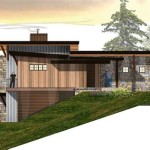Free Bat House Plans are detailed instructions and diagrams that guide the construction of bat houses, which are structures designed to provide shelter and a safe haven for bats.
As beneficial creatures in ecosystems, bats play crucial roles such as insect control, pollination, and seed dispersal. By providing them with suitable housing, bat houses can help conserve bat populations, which have been facing declines due to habitat loss, climate change, and other factors.
In this article, we will explore the various free bat house plans available online, providing detailed information about materials, dimensions, and construction techniques to assist individuals and organizations in building effective bat houses that meet the specific needs of the local bat species.
Consider these important points when utilizing free bat house plans:
- Choose species-specific designs
- Select durable, untreated wood
- Provide appropriate dimensions
- Ensure proper ventilation
- Face the entrance towards sunlight
- Mount at least 10-15 feet high
- Locate away from human activity
- Avoid using paint or stains
- Monitor regularly for occupancy
- Clean periodically to remove droppings
By following these guidelines, you can increase the effectiveness of your bat house and provide a valuable habitat for these beneficial creatures.
Choose species-specific designs
When selecting a free bat house plan, it is crucial to choose a design that is tailored to the specific species of bats that are native to your area. Different bat species have varying preferences for roosting habitat, including the size, shape, and materials of the bat house.
For example, some bat species prefer larger bat houses with multiple chambers, while others prefer smaller, single-chamber houses. Additionally, the type of wood used in the construction of the bat house can also affect its suitability for different species. Some bats prefer rough-cut wood with crevices and textures, while others may prefer smoother surfaces.
By choosing a species-specific design, you can increase the likelihood that bats will utilize the bat house. Resources such as Bat Conservation International and the North American Bat Monitoring Program can provide guidance on selecting the most appropriate bat house design for your location and target bat species.
It is also important to consider the local climate when choosing a bat house plan. In colder climates, bat houses should be well-insulated to provide a warm and protected environment for the bats. In warmer climates, bat houses should be designed to provide adequate ventilation to prevent overheating.
Select durable, untreated wood
When selecting the materials for your bat house, it is important to choose durable, untreated wood. Wood that has been treated with chemicals or preservatives can be harmful to bats, as they can absorb these chemicals through their skin. Additionally, treated wood may not provide the necessary rough surfaces that bats need to grip and roost.
The best type of wood to use for a bat house is untreated cedar, redwood, or cypress. These woods are naturally resistant to rot and decay, and they are also non-toxic to bats. If you are using a different type of wood, be sure to seal it with a non-toxic sealant to protect it from the elements and prevent bats from absorbing any harmful chemicals.
The thickness of the wood used for the bat house is also important. The walls of the bat house should be at least 3/4 inch thick to provide adequate insulation and protection from the elements. The roof of the bat house should be at least 1 inch thick to provide additional protection from the sun and rain.
Once you have selected the wood for your bat house, be sure to cut it to the correct dimensions and assemble it according to the plans. It is important to make sure that the bat house is well-constructed and weatherproof to provide a safe and durable home for the bats.
Provide appropriate dimensions
The dimensions of a bat house are critical to its effectiveness. A bat house that is too small will not provide enough space for bats to roost comfortably, while a bat house that is too large may be too difficult for bats to warm up. The ideal size for a bat house will vary depending on the species of bats that you are trying to attract, but there are some general guidelines that you can follow.
For most bat species, a bat house should be at least 14 inches tall, 12 inches wide, and 3 inches deep. The entrance to the bat house should be at least 3 inches wide and 2 inches high. The interior of the bat house should be divided into multiple chambers, each of which should be at least 4 inches wide and 2 inches deep. The chambers should be connected by small holes or slots that allow the bats to move between them.
In addition to the overall dimensions of the bat house, it is also important to pay attention to the size of the landing area. The landing area is the flat surface in front of the entrance to the bat house where bats can land and take off. The landing area should be at least 3 inches wide and 2 inches deep. It should also be free of any obstructions, such as nails or screws.
By providing appropriate dimensions, you can increase the likelihood that bats will utilize your bat house. Resources such as Bat Conservation International and the North American Bat Monitoring Program can provide more detailed guidance on the specific dimensions that are appropriate for different bat species.
Ensure proper ventilation
Proper ventilation is essential for a bat house to provide a healthy and comfortable environment for bats. Without adequate ventilation, the bat house can become too hot and humid, which can lead to heat stress and respiratory problems for the bats. Additionally, poor ventilation can lead to the accumulation of moisture, which can damage the bat house and create a breeding ground for mold and bacteria.
To ensure proper ventilation, bat houses should have multiple vents. The vents should be located at the top and bottom of the bat house, and they should be large enough to allow air to circulate freely. The vents should also be covered with a mesh screen to prevent bats from escaping and predators from entering.
In addition to vents, bat houses should also be placed in a location that receives good air circulation. The bat house should not be placed in a closed-in area, such as a shed or garage. It should also not be placed in a location that is exposed to direct sunlight for most of the day.
By ensuring proper ventilation, you can help to create a healthy and comfortable environment for the bats that use your bat house.
Face the entrance towards sunlight
The entrance to the bat house should face towards sunlight. This is because bats are heliothermic, which means that they rely on the sun to regulate their body temperature. By facing the entrance towards sunlight, bats can warm up quickly in the morning and stay warm throughout the day.
- Sunlight helps bats regulate their body temperature. Bats are mammals, and like all mammals, they need to maintain a constant body temperature in order to survive. Bats use their wings to fly, and flying requires a lot of energy. This energy production generates heat, which can cause bats to overheat. By facing the entrance of the bat house towards sunlight, bats can warm up quickly in the morning and stay warm throughout the day.
- Sunlight helps bats to stay active. Bats are nocturnal animals, but they are most active during the evening and early morning hours. When the sun is shining, bats can use the sunlight to help them stay active and alert. This is important for bats, as they need to be able to find food and avoid predators.
- Sunlight helps bats to reproduce. Bats typically give birth to one or two pups per year. The pups are born in the spring or summer, and they need to be kept warm in order to survive. By facing the entrance of the bat house towards sunlight, bats can create a warm and nurturing environment for their pups.
- Sunlight helps to keep the bat house dry. When the sun shines on the bat house, it helps to evaporate any moisture that may have accumulated inside. This is important, as moisture can damage the bat house and create a breeding ground for mold and bacteria.
By facing the entrance of the bat house towards sunlight, you can help to create a healthy and comfortable environment for the bats that use it.
Mount at least 10-15 feet high
Bat houses should be mounted at least 10-15 feet high to provide bats with a safe and secure roosting site. Mounting the bat house at this height helps to protect bats from predators, such as cats and raccoons, and from human disturbance.
- Protects bats from predators: Mounting the bat house at least 10-15 feet high helps to keep bats safe from predators, such as cats and raccoons. These predators are less likely to climb to this height to reach the bat house, and they are less likely to be able to reach the bats if they do climb to the bat house.
- Protects bats from human disturbance: Mounting the bat house at least 10-15 feet high also helps to protect bats from human disturbance. People are less likely to notice the bat house at this height, and they are less likely to disturb the bats if they do see the bat house.
- Provides bats with a clear flight path: Mounting the bat house at least 10-15 feet high gives bats a clear flight path to and from the bat house. This is important for bats, as they need to be able to fly freely to find food and avoid predators.
- Helps to keep the bat house dry: Mounting the bat house at least 10-15 feet high helps to keep the bat house dry. When the bat house is mounted at this height, it is less likely to be affected by rain and snow.
By mounting the bat house at least 10-15 feet high, you can help to create a safe and secure roosting site for bats.
Locate away from human activity
Bat houses should be located away from human activity to provide bats with a peaceful and undisturbed place to roost. Human activity can be disruptive to bats, and it can also make bats feel threatened. This can lead to bats abandoning the bat house or even injuring themselves.
- Noise: Human activity can generate a lot of noise, which can be disruptive to bats. Bats use echolocation to navigate and find food, and loud noises can interfere with their ability to do this. Additionally, noise can make it difficult for bats to sleep.
- Light: Human activity can also generate a lot of light, which can be disruptive to bats. Bats are nocturnal animals, and they are sensitive to light. Bright lights can make it difficult for bats to see, and they can also make bats feel exposed and vulnerable.
- Scent: Human activity can also generate a lot of scents, which can be disruptive to bats. Bats have a keen sense of smell, and they can be sensitive to strong scents. Strong scents can make it difficult for bats to find their way back to the bat house, and they can also make bats feel uncomfortable.
- Physical disturbance: Human activity can also lead to physical disturbance of the bat house. People may accidentally or intentionally damage the bat house, or they may disturb the bats that are roosting in the bat house. Physical disturbance can make it difficult for bats to use the bat house, and it can also make bats feel unsafe.
By locating the bat house away from human activity, you can help to create a peaceful and undisturbed place for bats to roost.
Avoid using paint or stains
Paint and stains can be harmful to bats, so it is important to avoid using them on bat houses. Paint and stains can release toxic fumes that can be harmful to bats, and they can also make the bat house less attractive to bats.
- Toxic fumes: Paint and stains can release toxic fumes that can be harmful to bats. These fumes can cause respiratory problems, and they can even be fatal to bats.
- Unattractive to bats: Paint and stains can also make the bat house less attractive to bats. Bats are attracted to natural materials, and they may be less likely to use a bat house that has been painted or stained.
If you want to protect bats and encourage them to use your bat house, it is important to avoid using paint or stains.
Monitor regularly for occupancy
Once you have installed your bat house, it is important to monitor it regularly for occupancy. This will help you to determine if bats are using the bat house and if there are any problems that need to be addressed.
- Check for bats at dusk and dawn: Bats are most active at dusk and dawn, so these are the best times to check for them. Stand quietly near the bat house and listen for the sounds of bats entering or leaving the bat house. You may also be able to see bats flying in and out of the bat house.
- Look for bat droppings: Bat droppings are small, dark pellets that can be found on the ground below the bat house or on the landing area. The presence of bat droppings is a good indication that bats are using the bat house.
- Inspect the bat house for damage: Regularly inspect the bat house for any damage, such as cracks, holes, or broken parts. Damage to the bat house can make it less attractive to bats or even dangerous for them to use.
- Clean the bat house if necessary: If you find that the bat house is heavily soiled with bat droppings, you may need to clean it. To clean the bat house, remove the bats from the bat house and then use a soft brush to remove the droppings. Be sure to wear gloves and a dust mask when cleaning the bat house.
By monitoring your bat house regularly, you can help to ensure that it is providing a safe and comfortable home for bats.
Clean periodically to remove droppings
Bat droppings, also known as guano, can accumulate in bat houses over time. It is important to clean the bat house periodically to remove the guano, as it can be a health hazard to bats and humans. Guano can contain histoplasma capsulatum, a fungus that can cause histoplasmosis, a respiratory disease that can be serious in people with weakened immune systems.
- Guano can accumulate in large quantities: Bats can produce a lot of guano, and it can accumulate quickly in bat houses. This is especially true in areas where there are a lot of bats or where the bat house is not cleaned regularly.
- Guano can be a health hazard to bats: Guano can contain histoplasma capsulatum, a fungus that can cause histoplasmosis, a respiratory disease that can be serious in bats. Histoplasmosis can cause bats to become sick and even die.
- Guano can be a health hazard to humans: Guano can also be a health hazard to humans. People who inhale the spores of histoplasma capsulatum can develop histoplasmosis. Histoplasmosis can cause flu-like symptoms, such as fever, chills, cough, and muscle aches. In some cases, histoplasmosis can also cause more serious symptoms, such as pneumonia and meningitis.
- Guano can damage the bat house: Guano can also damage the bat house. Guano is acidic, and it can corrode the wood and metal components of the bat house. This can weaken the bat house and make it less durable.
To clean the bat house, remove the bats from the bat house and then use a soft brush to remove the guano. Be sure to wear gloves and a dust mask when cleaning the bat house.
It is important to clean the bat house regularly, especially if you live in an area where histoplasmosis is common. By cleaning the bat house regularly, you can help to protect bats and humans from this disease.










Related Posts








